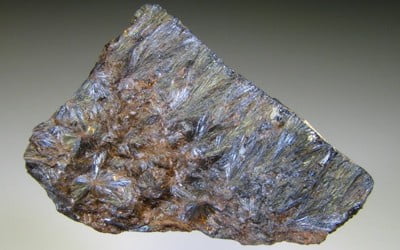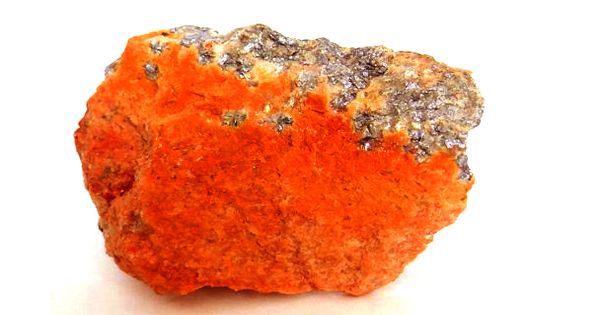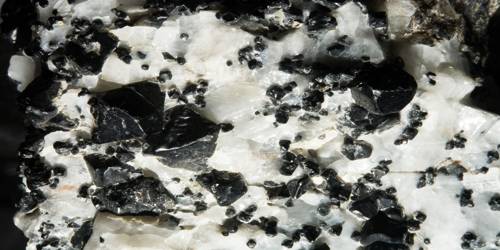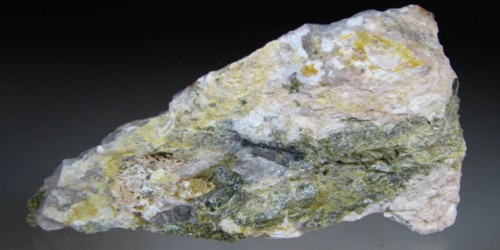Ludwigite is a magnesium-iron borate mineral: Mg2FeBO2. It is typically formed in magnesian iron skarn and contact metamorphic deposits. It is a mineral consisting of an iron magnesium borate occurring in fibrous masses of a blackish green color.
It was first described in 1874 for an occurrence in Ocna de Fier, Banat Mountains, Caraș-Severin County, Romania and named for Ernst Ludwig (1842–1915), an Austrian chemist at the University of Vienna.
General Information
- Category: Borate mineral
- Formula: Mg2FeBO2.
- Crystal system: Orthorhombic
- Crystal class: Dipyramidal (mmm)
- Color: Pitch-black, olive-black

Properties
Ludwigite typically occurs in magnesian iron skarn and other high-temperature contact metamorphic deposits. It forms a solid solution series with the iron(II)-iron(III) borate mineral vonsenite.
- Formula mass: 195.26 g/mol
- Crystal habit: Massive – fibrous commonly in fanlike to felted aggregates
- Cleavage: [001] Perfect
- Fracture: Brittle – Conchoidal – Very brittle fracture producing small, conchoidal fragments.
- Mohs scale hardness: 5.5
- Luster: Silky to submetallic
- Streak: greenish black
- Diaphaneity: Opaque, translucent in thin fragments
- Specific gravity: 3.6 – 3.8
- Optical properties: Biaxial (+)
Occurrences
Ludwigite is a somewhat uncommon, but widespread mineral that can be found in Romania, Italy, Scotland, Sweden, Russia, Iran, the United States, Canada, and North Korea, among others. Typically, It occurs in magnesian iron skarn and in contact metamorphic deposits.
It occurs in association with magnetite, forsterite, clinohumite and the borates vonsenite and szaibelyite.
Information Source:
















